Description
Capturing solar energy for domestic hot water or high-efficiency heating
Sommaire
Sommaire
- 1 Description
- 2 Sommaire
- 3 Introduction
- 4 Video d'introduction
- 5 Étape 1 - Preface
- 6 Étape 2 - Grid recovery
- 7 Étape 3 - Door recovery
- 8 Étape 4 - Panel sizing
- 9 Étape 5 - Making the frame
- 10 Étape 6 - Frame painting
- 11 Étape 7 - Assembling the grid and copper pipes (feeders)
- 12 Étape 8 - Installing the grids in the frame
- 13 Étape 9 - Panel closure
- 14 Étape 10 - Additional panels
- 15 Étape 11 - Installation
- 16 Étape 12 - Solar heating
- 17 Notes et références
- 18 Commentaires
Introduction
Solar panels are very efficient at taking advantage of solar radiation. In our latitudes the sun generates up to 1000 Watts per m². With photovoltaic panels we can capture 200 W / m², with thermal energy it rises to 800W / m², four times more! Solar panels are much more profitable than photovoltaic panels and much less expensive. The "home made" solution Eric Lafond offers us easily reach 500W / m² for a cost of 15 € per m².
This [1] will allow you to know the solar power you can expect to receive depending on the geographical position and of the season.
Solar thermal panels are particularly interesting for domestic hot water production. In this case they are called solar water heater.
For a two people household, you can expect 3 to 4m2 (32 to 43 sq foot) of solar thermal panels to cover 90% of the hot water needs during the year. The hot water tank will take over during the cloudy days. If there are more inhabitants, therefore more water being consumed, you need to increase the size of the solar panels. For example, 6m2 (64,5 sq foot) for 6 people.
The complete system Eric is presenting, which includes home-made panels, supply pipes, coolant, solar balloon, circulator, and a regulator is profitable in two to three years. The panels installed at his house are in their eighteenth year.
These thermal panels are designed in the same way as those of the market : an insulator and a glass window holds a solar collector traversed by a heat transfer fluid in between them. In this situation, the solar collector is the grid one can find at the back of a fridge. Insulation is provided by the doors of that same refrigerator. The glass is collected on double glazing windows. You will find many fridges in landfills or recycling areas, the double-glazing windows usually clutter the glassmakers.
A big thank to Riké, who shared with us his know-how, from his 20 years of experience in the world of energy, and to the members of the Grand Moulin collective who welcome us to the training they organized, particularly to Karine, Sylvain and Pascal. Thanks also to Jean-Loup for the accompaniment on the cutting of the glass and the solders, and to all the other volunteers of the participative building site for their help.
Matériaux
- fridge doors of similar size (support)
- grilles on the back of fridge of similar size (sensor)
- rot-resistant wooden battens (douglas, larch ...)
- 16mm-diameter copper tubes (plumbing)
- double-paneled window
- black acrylic paint
- wood screw or self-drilling screw
- washers
- polyurethane sealant
- corks
- brass solder rods and stripper
Outils
- cutter and blades
- pipe cutter
- screwdriver and bits
- hacksaw and/or grinder
- blowtorch
- handsaw and/or circular saw
- sandpaper
- solid iron tube (diameter 12mm)
- protective equipment (goggles, gloves, brazing protection glasses)
Étape 1 - Preface
Panel Orientation
The thermal solar panels that we are creating will have to be installed direcly facing the south, ideally forming an angle of 60° with the horizon, (or on the outside wall, vertically at 90°, if the former is not possible). Rooftop usage of these panels is much less efficient in the winter and causes overheating in the summer (more details in the installation phase).
Inertia
To maximize the effectiveness of the thermic solar energy, it is necessary to minimize the inertia in the light uptake and to maximize it in the storage or the diffusion. The panels work as soon as there is a sunbeam thanks to their low inertia. The heat is kept for a long time with its great volume and its good insulation.
The pipes of the refrigerator rack have a small diameter (0,15 inches), there is so a low volume of heat transfer fluid to heat in the panel. This low inertia allows to increase fastly the temperature as soon as there is a sunbeam between two clouds and then to heat the hot water balloon. The more the diameter of the pipes increases, the more it needs time to heat a great volume of fluid and the less the system is performant.
So that the panels temperature increases as fast as possible, the volume between the insulating and the glass need to be as little as possible. Then, the thickness of the panel has to be limited, in the limit that the grid doesn't touch nor the bottom neither the glass. Otherwise, it will lose its calories by conduction with the other elements.
Temperature
The temperatures can exceed 302°F inside the panel, it is then needed to use materials resistant to heat and to UV radiations. It is impossible to use sticks or paints with solvents which don't resist to UV radiations. Here, we use putty PU and acrylic paint. For a good longevity, it is also needed to use rot-proof local wood.
On winter nights, it can get very cold inside the panel. The different materials, insulation, metal, wood and glass will expand differently between winter night and summer sun. The joints that unite them must be thick to absorb the deformation, if they are not thick enough they will tear off.
Grid
The specificity and ingenuity of these solar thermic panels are to use refrigerator grills. But beware, not all grids are good and they must be used in the right direction! The grills must be provided with cooling fins and painted black (see photo). They must not be in galvanized steel, the paint will not hold on. Similarly, some refrigerators are equipped with pipes connected by wire, the apparent surface of these grids is not sufficient, they are not interesting for this use.
The right grilles have a direction of assembly, the fins, comparable to louvers, must capture the sun. In a sense the sun will pass through, it's bad, in the other direction it will capture the rays, it's the good sense! They must be perpendicular to the sun's rays.
Tip: take the grid and lift it between the sun and yourself, in one sense the rays will pass and not in the other.
Refrigerating gas
Refrigerator grills are covered by a refrigerant, harmful to the environment, the greenhouse effect and the ozone layer. In France the refrigerating gases must be recovered. However, there are exemptions for equipment containing less than 3 kg of fluid until 2025. The domestic installations (refrigerator and air conditioner) are degassed before continuing their upgrading process. We can open the circuit without too much conscience.
Safety
Be careful, you will do something that may involve risks.
The information and advice given in this tutorial come from joint workshops and are neither perfect nor exhaustive. If you don't have certain tools or if you don't feel competent, don't hesitate to ask around for help. Remember to wear your safety equipment, to work in ventilated areas and do not put yourself in danger. Be careful, calm, and of course critical of any false good ideas you may have ("that's how it will go...").
Enjoy!
Étape 2 - Grid recovery
Refrigerators are numerous in waste collection centres, it is necessary to identify those which have the adequate grids (see Preface - Grid) and of the largest possible dimension. Pinching the pipes at the outlet of the compressor will limit the exhaust of refrigerant gases. Cut the pipes as close as possible to the compressor to ensure maximum length with the grid. Unscrew the grid. Wash the grid with soapy water. Blow a blower into the pipes to remove impurities. Seal the pipes with tape to prevent impurities from getting into them, as they may have a small diameter and become obstructed.
Étape 3 - Door recovery
Refrigerator doors are filled with insulating foam. By recovering them and assembling them they form the back of the panel. They must be flat (and not curved), it does not matter if there is a chamfer on the edges, it will be filled with mastic.
- disassemble the refrigerator door.
- Remove all the elements except the insulation and the door sheet: seal, laminations, bolts, handles, screws, stickers... If the inside is not flat, remove it too.
- If the foam insulation is deformed, saw off the protruding parts to make the face as flat as possible. You don't need to have a beautiful surface either, it's the back of the panel.
Étape 4 - Panel sizing
Ideally, the panels should be between 1.5 and 2m², if they are larger they will be heavy and therefore more complex to install. The glass may break if the panels deform. If they are smaller it will be necessary to increase the number of panels, therefore more work to do.
Grilles of similar size, slightly smaller than the doors, should be assembled. For a panel of about 2m² you generally need 3 to 4 grilles for 2 or 3 doors. In our case we have 3 grids and 3 doors.
- Assemble at least 2-3 doors of similar sizes.
- Collect at least 3 grids of similar sizes that fit on the 3 doors.
Étape 5 - Making the frame
The refrigerator doors form the structure of the panel and are its insulator. They will be glued side by side, in the height. The difference in thickness of the doors does not matter, they are aligned on the front face, on the interior side of the panel.
- Cut the doors so that they are all the same length.
- Sand the doors
- Place the doors on two rafters, length against length, metal sheet side down.
- Make a joint along the length of the doors then glue them.
- Cut 4 battens to form a frame on the panel.
- Sand the battens
- Put putty on the width of each batten and glue them under the frame, against the sheet metal, using clamps. Do not over tighten to have a good putty thickness (>1mm).
- Let dry.
- Turn the frame over on the rafters and make seal with putty inside and outside the frame and between the doors.
- Smooth the joints with the finger. To smooth without "lumps" and to avoid getting putty on your fingers, dip your finger in soapy water regularly.
- Let dry
Étape 6 - Frame painting
- Paint the frame, battens and door edges with mat black acrylic paint.
- Let dry
Étape 7 - Assembling the grid and copper pipes (feeders)
This step consists of connecting the solar collectors (refrigerator grid) to the heat transfer fluid circuit via two feeders (copper tubes). The feeders must have a diameter equal to the sum of the diameters of the pipes they feed, in addition, in our case, 3 pipes of 3mm inside diameter, it is necessary a feeder of at least 9mm inside diameter.
- Position the grids on the frame, in the following direction, the blades in opposition to the sun's rays once the frame is vertical. If necessary, re-cut the grids to the correct size.
- Each grid will be connected to two feeders, one with a "cold" water inlet and the other with a "hot" water outlet.
- For each grid, cut the pipe with a pipe cutter about 10 cm from the grid and the other about 15 cm from the grid. It must be possible to fit each tube in a different feeder in the same plane.
- Deburr the cuts
- Carefully clean the tubes cut to a few centimetres with sandpaper. There must be no paint left to solder successfully.
- Cut a passage in the frame to get the feeders out.
- Cut 2 copper pipes, the feeders, so that they protrude about 15 cm from the panel
- Position the two feeders. One will receive the "short" hot water pipes, the other the long cold water pipes.
- Crush the ends of the two feeders on the blind side of the frame, the one by which the feeders do not go out.
- Mark with pencil the place where the pipes and feeders meet.
- Mark with a needle.
- Drill the feeders to the diameter of the pipes (4mm).
- Deburr the holes of the feeders.
- Thread a metal rod about 12mm in diameter into each of the feeders with sandpaper at the end to remove the chips inside the pipes, as if to clean them.
- Put the metal rods back into the feeders, they serve as stoppers for the grid pipes. If the grid pipes are pushed all the way down to the bottom of the feeder, the heat transfer fluid won't get through!
- Insert each tube into the corresponding feeder
- Hold the grids and feeders with iron wire in between.
- Braze the grid pipe/feeders interfaces, making sure to braze all around the pipe. As the grid pipes are made of tinplate, the solder is made of brass or silver to avoid melting the metal.
- Braze the blind ends of the feeders.
- Remove the two metal rods that were used to stop the pipes from the grids.
- Shake the frame to remove potential solder impurities.
- Perform a "Riké" solder leak test. Moisten one thumb and put it at the entrance of one of the feeders, suck it up with your mouth and put your tongue on the 2e nurse. The tongue must stay stuck. Otherwise review the solder joints.
The feeders may be on the top or bottom of the frame, this does not change the proper operation of the panel. To be adapted according to the installation of each one.
Étape 8 - Installing the grids in the frame
To concentrate heat on the drids, it must not be in direct contact with the door metal sheet. They are spaced by cork spacers. Cork is rot-proof and resistant to high temperatures.
- Cut corks into 5mm thick slices with a cutter.
- Thread a washer onto a screw and pass it through the blades of the grids then into a cork washer. The order of the elements must be as follows: screw head, washer, grid, cork washer. This forms a pad.
- Prepare all the grids assembled with a pad every 30 cm. The objective is that the grid is close to the bottom of the frame without ever touching it. Adjust the number of pads according to the situation.
- Clean the panel.
- Position the grids and feeders in the frame.
- Screw the studs to the panel without overtightening.
- Make sure that the grids do not touch the bottom metal sheet, deform the grids if necessary.
- Paint everything that is not black in black (screw head, washers, feeders...)
Étape 9 - Panel closure
To create a greenhouse effect and limit convection between the grille and the outside, the panels will be closed with glass. Glassmakers get rid of old windows, especially double-glazing, by asking them nicely they can be recovered free of charge. Ideally, a glass thickness of 4mm is required for vertical panels and 5mm for inclined panels, more subject to hail and bad weather. It is not necessary to have thicker glasses, it reduces their performance.
- Recover windows, to prevent them from breaking move the windows and glasses on the edge and not flat. To work with glass you must protect yourself: long sleeves, gloves and glasses.
- Remove the glazing beads, slide a chisel or screwdriver between the window frame and the glazing bead on the inside of the window, tap with a hammer to separate the two and then remove the glazing bead by hand. Do the same for the other sides.
- The glazing is wedged on the sides. Remove the shims with a plier. By moving the window frame slightly away from the glass, it is easier to remove the shims, be careful not to force the glass too much as this may cause it to burst.
- Recover the glass or double glazing
- If it is double glazing, separate the two panes. Slide a cutter blade into the seal against the glass. Work standing upright, with the vertical glass on battens, moving the cutter from top to bottom. Swivel the glass to always work in this position, from top to bottom. I broke three windows while working flat and none vertical! Remove the seal in the same way for the second pane of double glazing
- Ideally it is necessary to work with windows which do not have anti-UV treatment, which limits the entry of the rays in the panel. Windows with UV treatment have a slight reflection. If you want to compare two panes, put them side by side in front of a white background, if it is tinted on one side, there is anti-UV treatment.
- To clean the remaining seal on the glass, place it flat on a table and pass a cutter blade at 45°. A rag with a little acetone will remove the last remains.
- Measure the width of the frame, between the two cleats, remove 1cm, and cut the glass to this measure. The glass is 1/2cm shorter on each side, so that it does not break when the panel is placed on the edge. To cut a window, trace with a diamond the cutting line then wipe a cloth with petrol. Position the cutting line on the edge of the table, firmly grasp the edge to be broken and snap it in a downward movement. The cut is most obvious when the part to be removed is at least 10 cm and is not too long. If you must cut a glass in length and width it is better to start with the width then the length.
- Cut the number of panes required to completely cover the panel.
- Clean the windows carefully, especially the side that will be inside the panel because you will not be able to do it once closed.
- Make a bead of black PU putty on the frame and carefully place the glasses one by one without pressing them, do not crush the beads. To avoid condensation, the panels should not be completely sealed.
- Pass the sander with a lamella disc over the edge of the glass to break the angle and not cut yourself.
- Make a black PU seal between the edge of the frame and the glass and smooth it with a finger soaked in soapy water.
- Make a black PU seal between the glasses and smooth it in the same way.
- The solar thermal panel is finished, well done, just let it dry and install.
Étape 10 - Additional panels
Depending on the hot water requirements and the amount of sunlight, several solar thermal panels may be required. To make additional panels, repeat the previous steps. However, unlike the blind panel, the feeders must be through, i.e. the two copper pipes, hot and cold water, must protrude at the bottom of the frame on each side. The diameter must increase by 2mm in each additional panel: 12mm for the blind panel, 14mm in the second, 16mm in the third, etc. Care must be taken to properly connect the hot water feeders between them and also for cold water feeders.
- Connect the feeders with hoses.
- Insulate the feeders and their holes through the panels.
Étape 11 - Installation
Orientation =
To capture maximum solar energy, calories, the solar panel(s) must be perpendicular to the sun's rays for two reasons :
- By being perpendicular to the rays the energy density is higher, the more the angle increases, the more the "number" of rays captured will be reduced per unit area. In other words, the apparent surface of the panel, seen from the sun, is reduced with the angle.
- the glass reflects the rays, if the rays arrive perpendicular to the glass, all enter the panel, the more the angle increases, the higher the proportion of reflected rays is.
Solar panels are rarely mobile and their angle is therefore fixed to the installation. Solar power is much stronger in summer than in winter, not to mention the length of days. Solar energy is at least three times more important in summer than in winter (see tutorial energy in the home), so the panels are sized and oriented for the most critical period: winter.
In the middle of winter, in France, the sun has a zenith at 30° with the horizon, this is its maximum height. In summer, at the same latitudes, it rises to 60°. Ideally, the panels will be installed at a 60° angle to the horizon, south-facing. Otherwise, to limit the losses, one can put them vertically against a wall, it is more interesting and less dangerous than on roofs.
In summer, the solar power being much more important, the angle does not matter, the panels will quickly be very hot, even too much. A shading is interesting to limit overheating, a cap on a vertical panel does very well.
Plumbing =
The solar thermal panels must be positioned as close as possible to the hot water tank to minimize heat loss.
The panels must be connected to an exchanger tank. In addition to the standard electrical resistance, an exchanger passes the heat transfer fluid through the storage tank to transfer heat from the panels to the domestic water. You can find these exchange tanks in DIY stores. They cost 15 to 30% more than 100% electric balloons but will pay for themselves very quickly. Otherwise, some good tutorials allow you to make them yourself from a classic tank.
The system must be equipped with a regulator and a circulator. In our case the circulator is switched on when the temperature of the panels is 10°C higher than that of the storage tank, it is switched off when this difference is less than 5°C. This prevents the balloon from cooling at night or when the sun is shy. The tank is also equipped with an expansion vessel to absorb the expansion of the heat transfer fluid on sunny days. These elements are generally supplied with the solar heat exchangers. You can also make them yourself.
It is advisable to use a heat transfer fluid in the system. If it is used in winter it must be antifreeze, otherwise the system must be drained.
Étape 12 - Solar heating
It is possible to use the same solar thermal panel system in low temperature heating. The heat transfer fluid from the panels is fed directly into the heating pipe network in the floor or walls. However, in solar energy, heating is much less obvious than domestic hot water. Indeed, for heating, a maximum of energy is required when it is least available: in winter, when the need for domestic hot water is spread over the whole year. Moreover, the energy required for heating the house is 6 times greater than that of hot water (see tutorial energy in the home), so it will require 6 times more panels for heating than for hot water.
For example, depending on the year, Riké covers 10 to 30% of its heating needs with 14m² of panels, while it covers over 90% with 6m² of panels dedicated to heating its 350 litre hot water tank.
A simpler solar heating solution to implement was documented in February, it is a [Solar heating slate version
Notes et références
- Tutorial directed by Camille Duband and Clément Chabot during the Low-tech Tour France, April 2018.
- These thermal solar panels were developed and optimized by Eric Lafond, alias Riké for over fifteen years. There are many installed between the Isère and the Drôme.
- The tutorial was realized in the collective of the Grand Moulin, in Saint Lattier in Isère
- https://fr.wikipedia.org/wiki/Chauffe_solar_water
- https://fr.wikipedia.org/wiki/R%C3%A9flexion_(optical)
- https://fr.wikipedia.org/wiki/Coefficient_de_Fresnel
- https://www.energieplus-lesite.be/index.php?id=11278#c5928+c20968213+c20968253
Yes
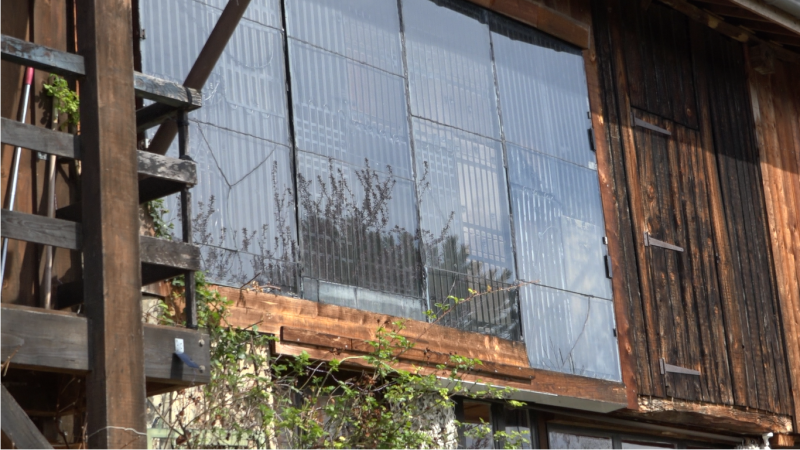
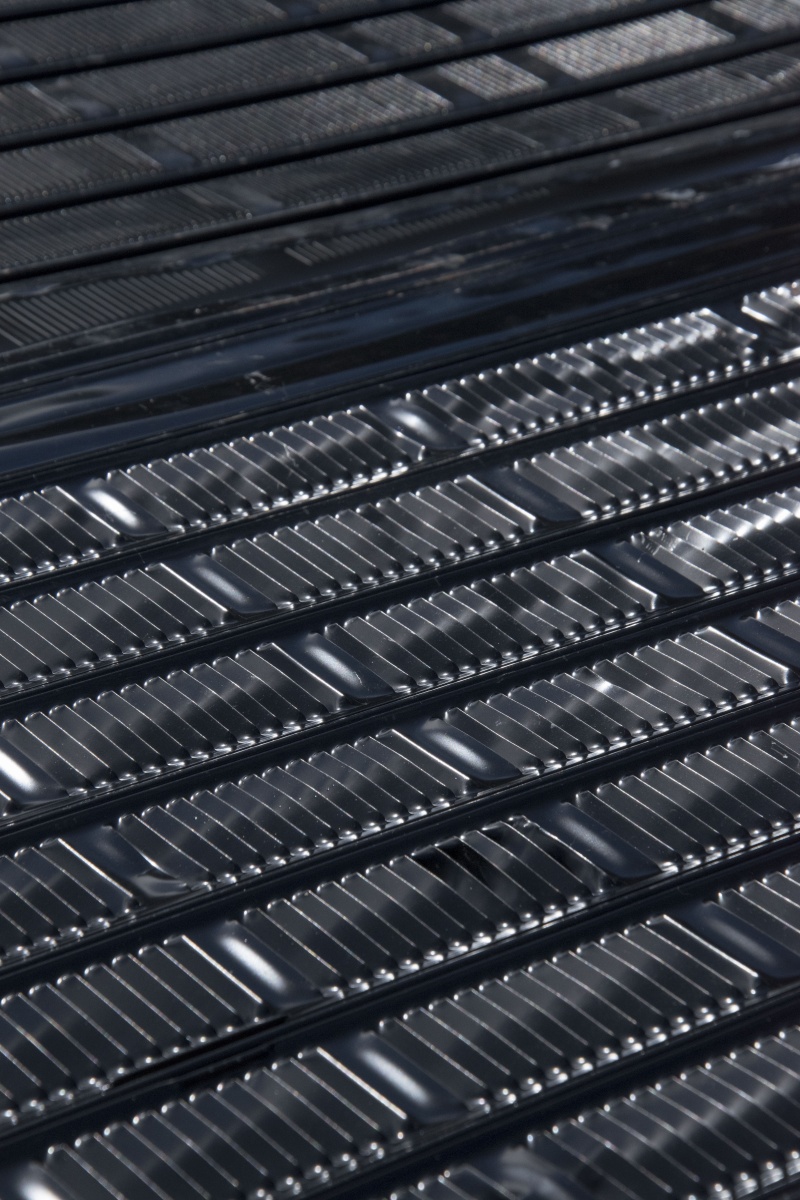

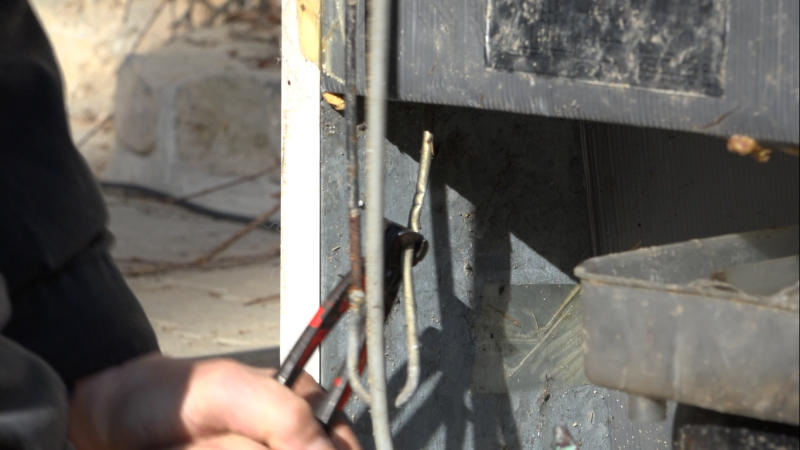
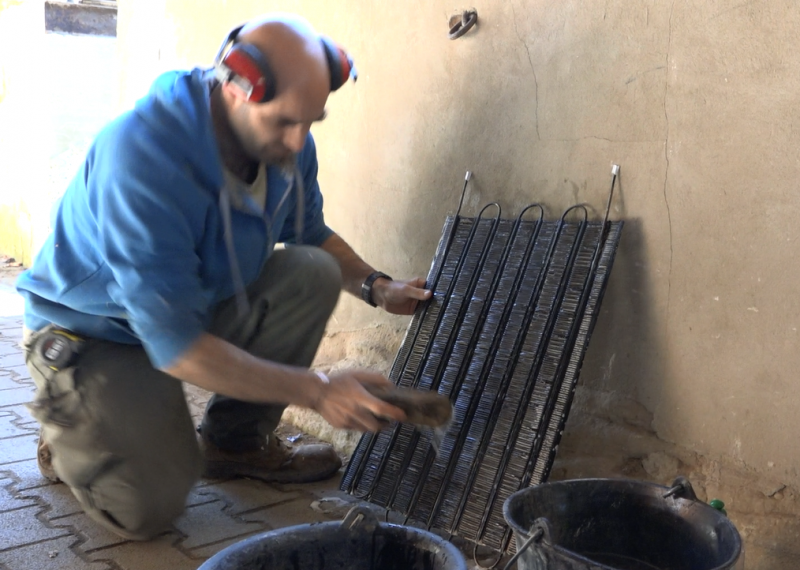
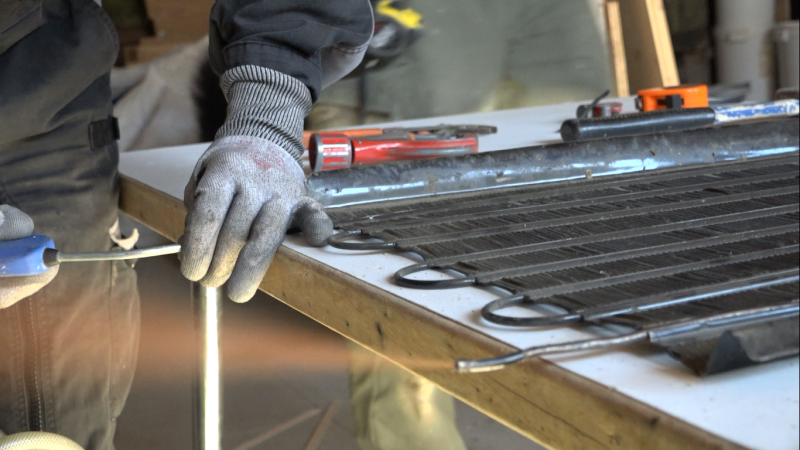
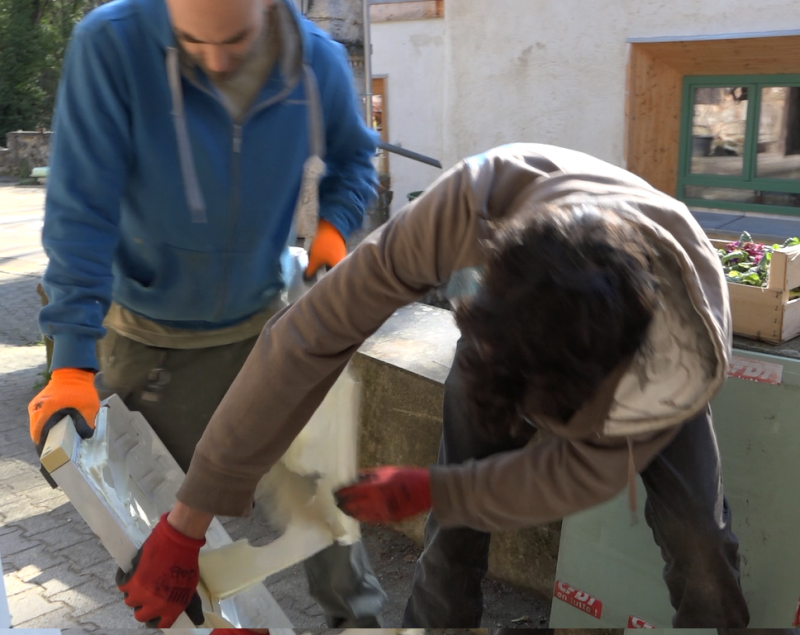
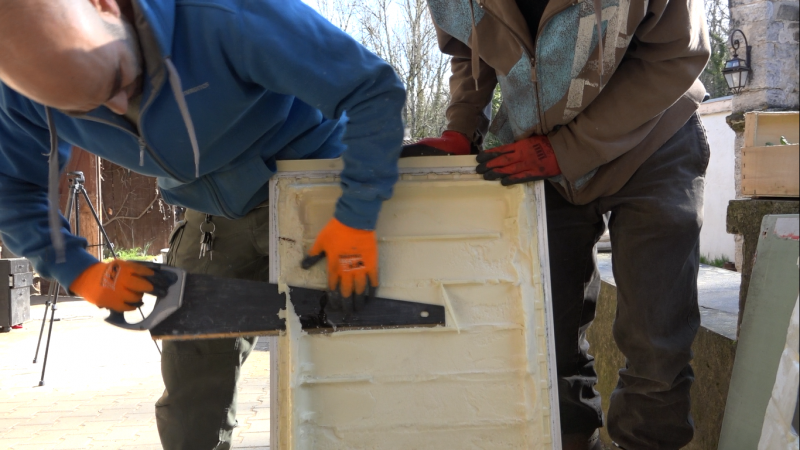
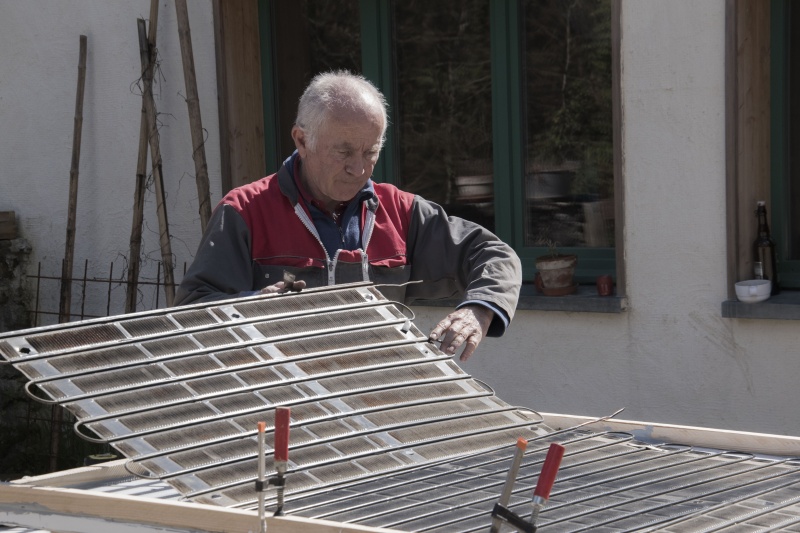
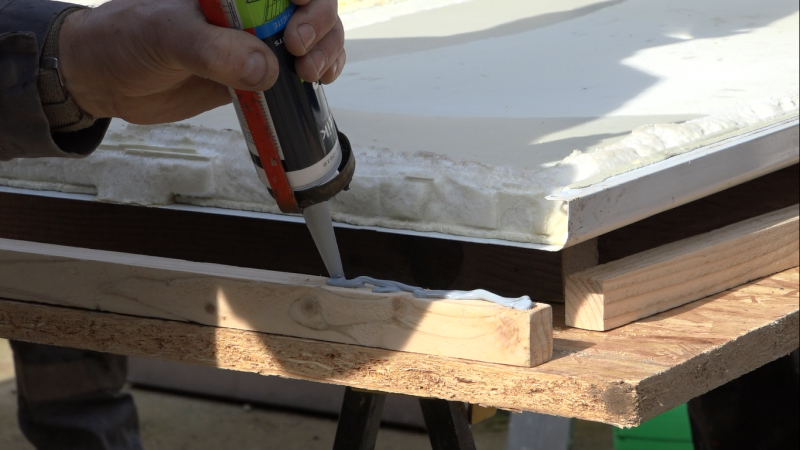
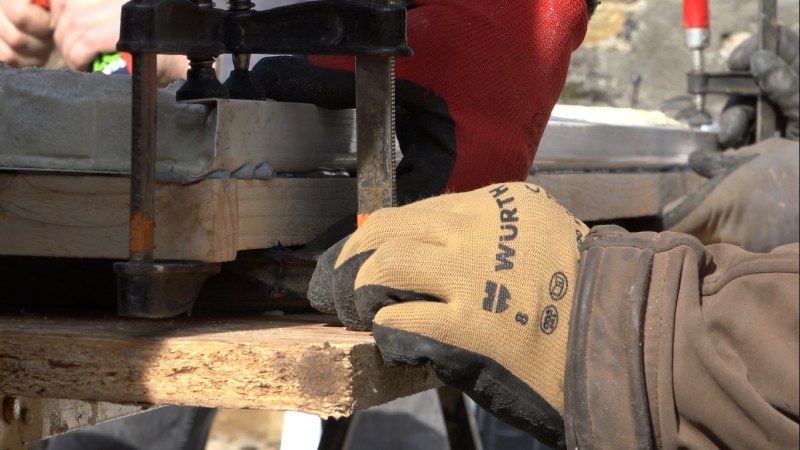
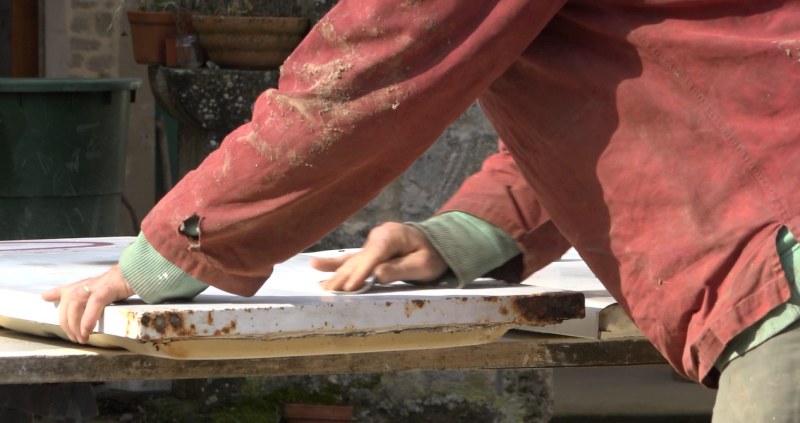
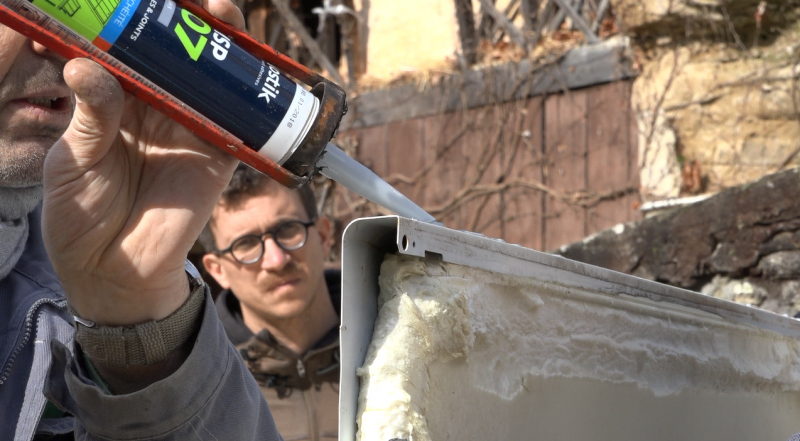
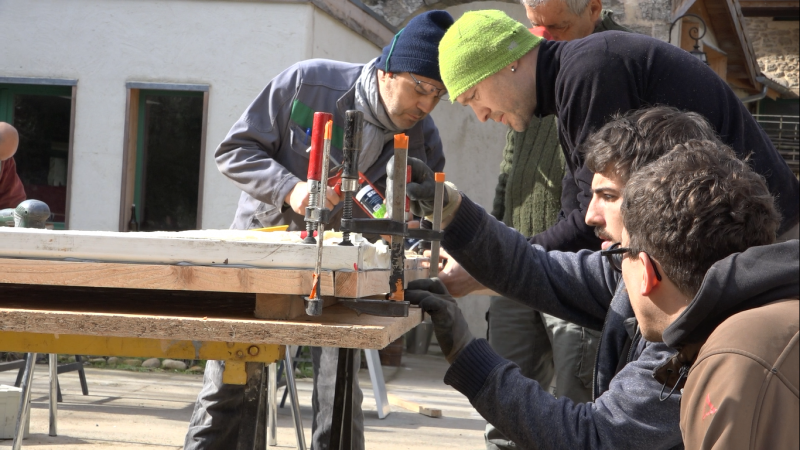
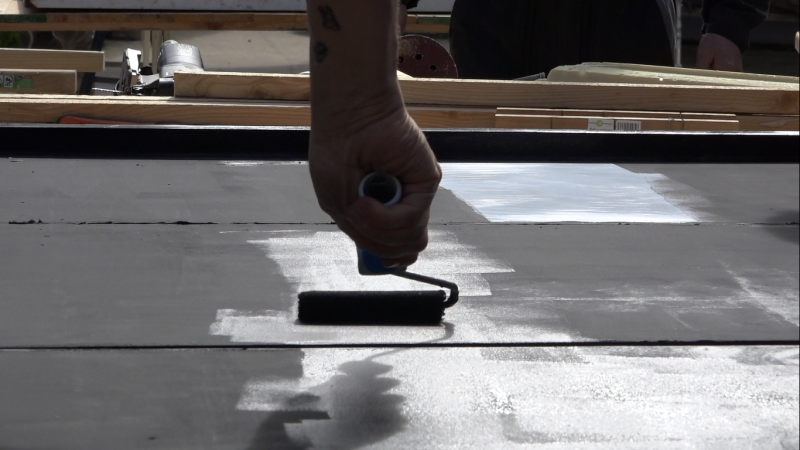
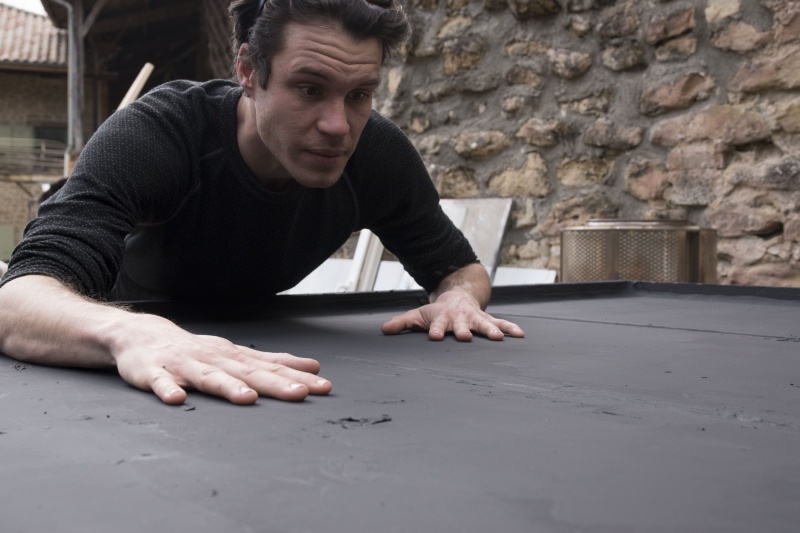
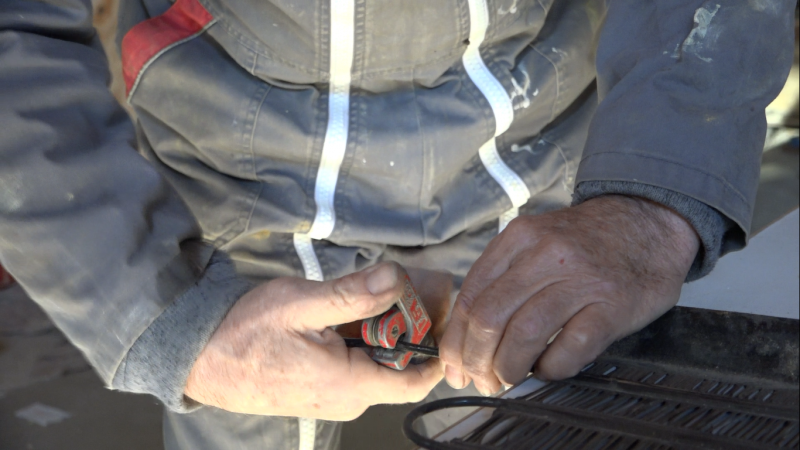
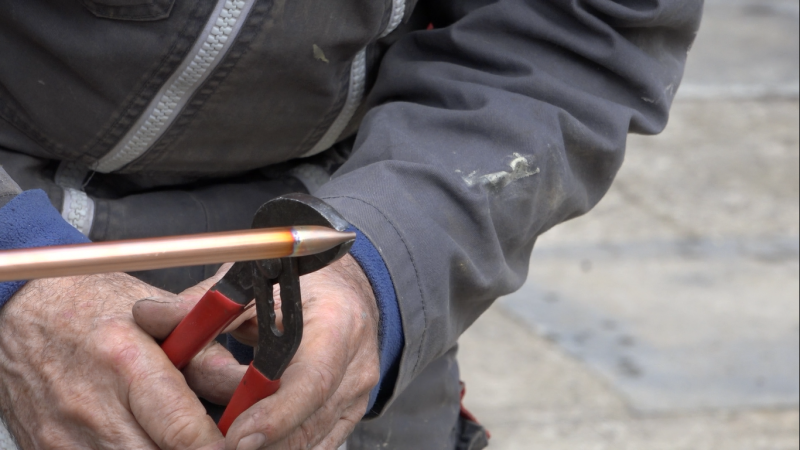
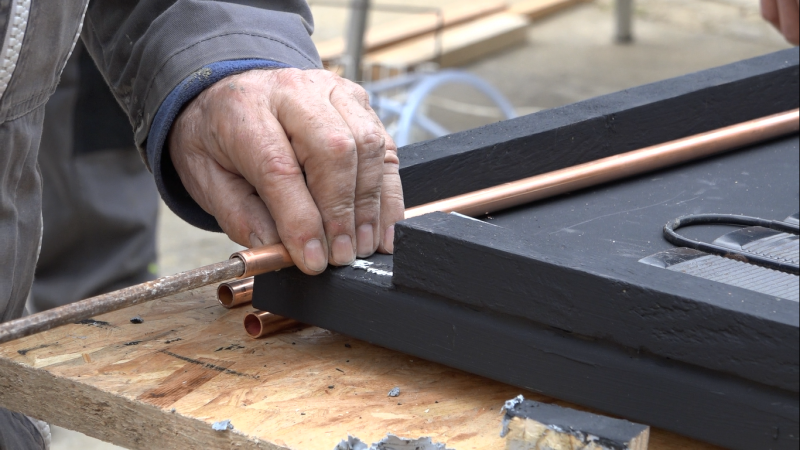
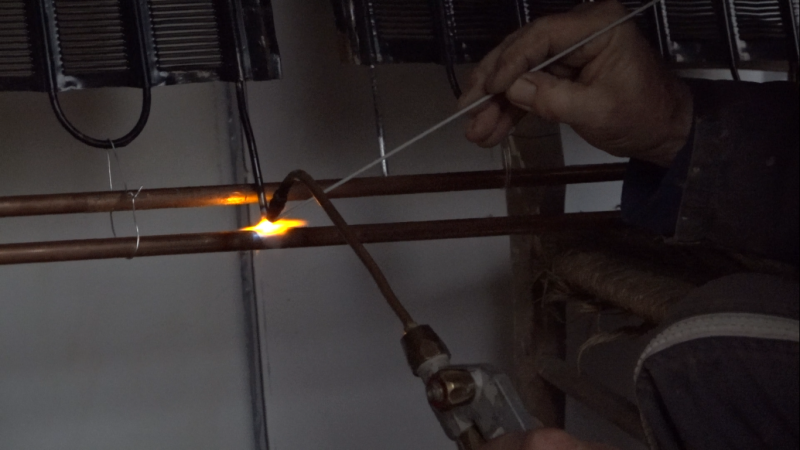
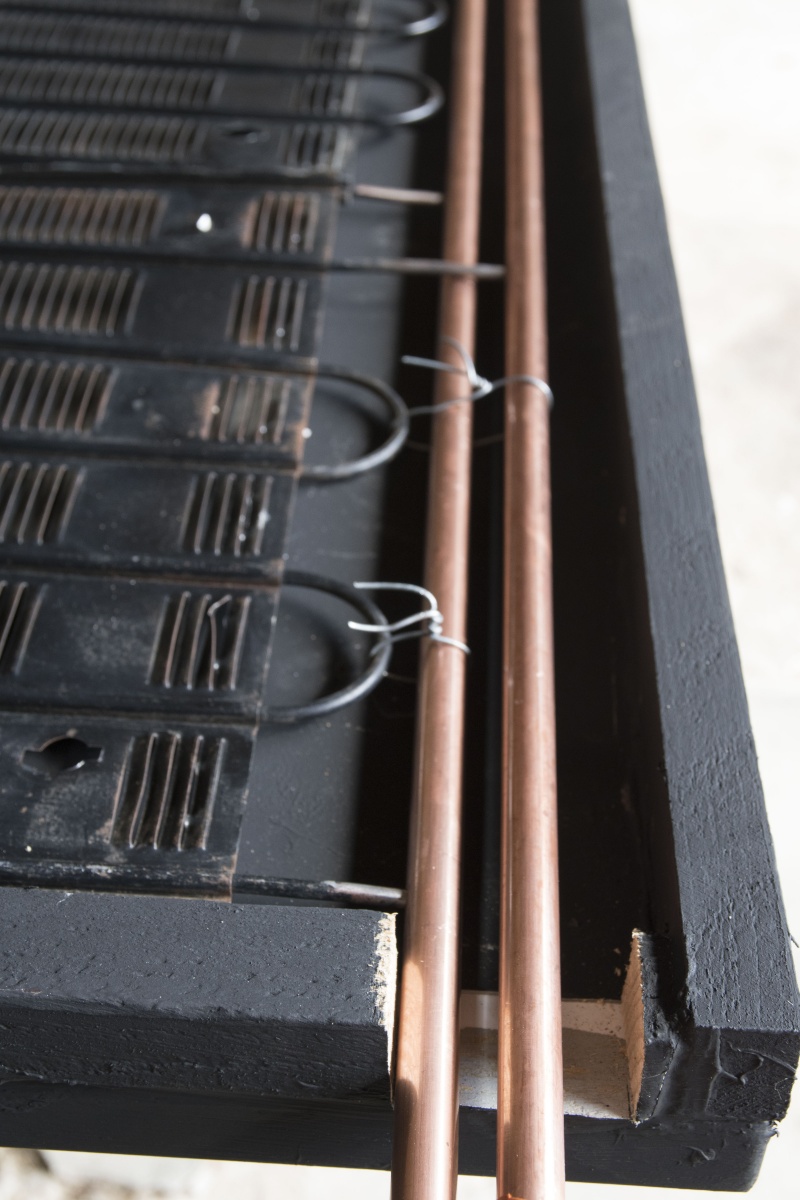
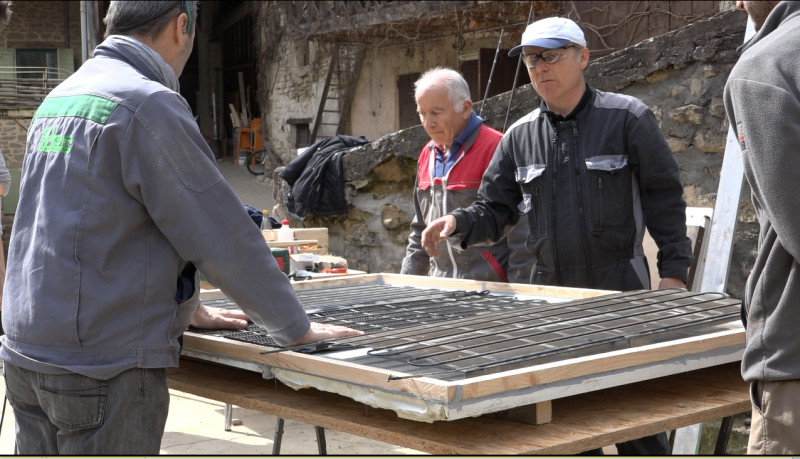
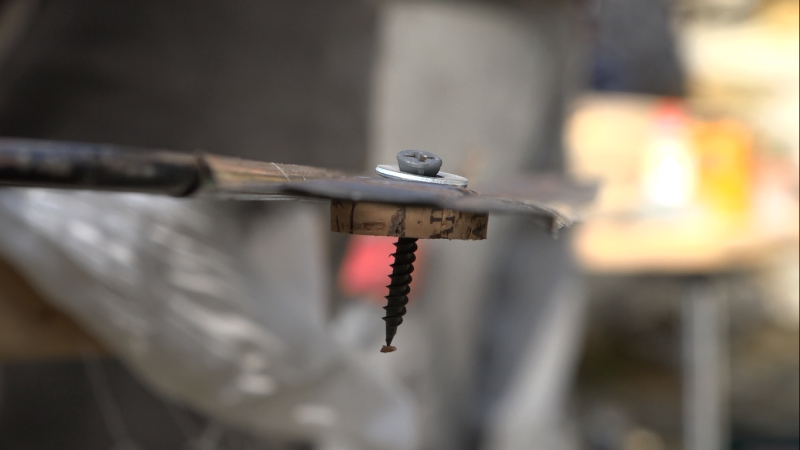
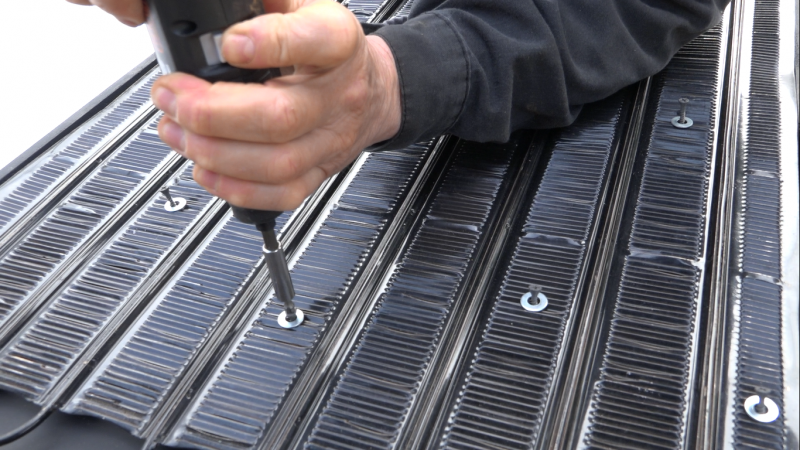
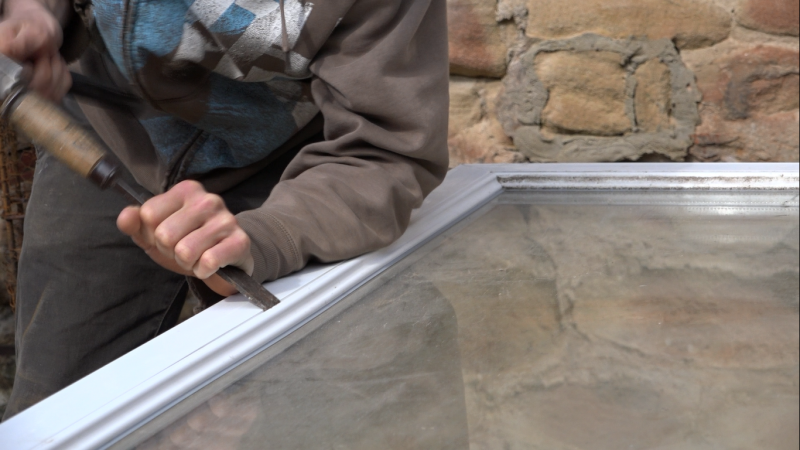
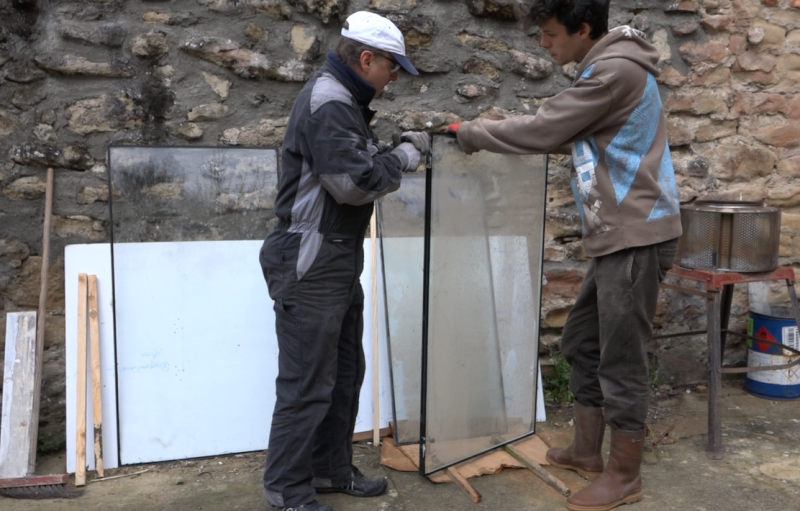
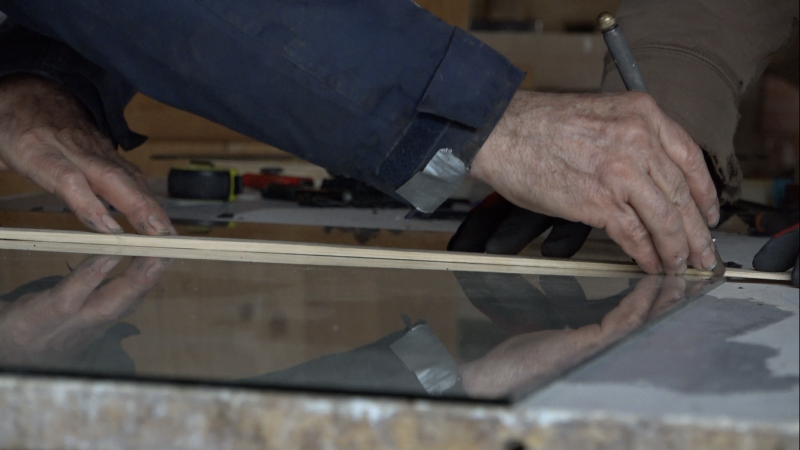
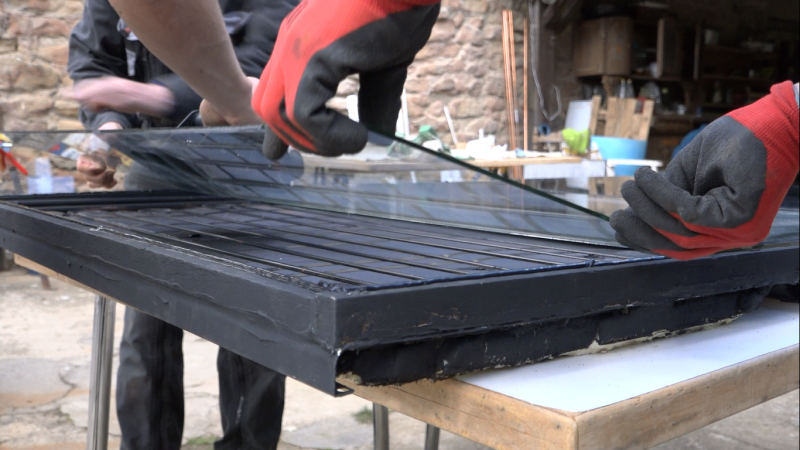
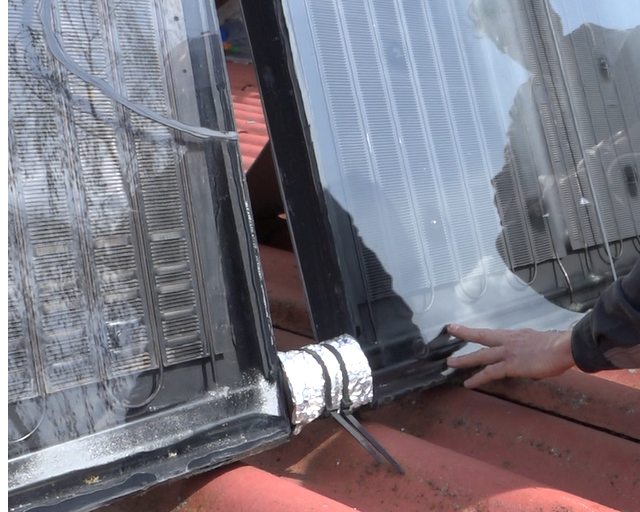
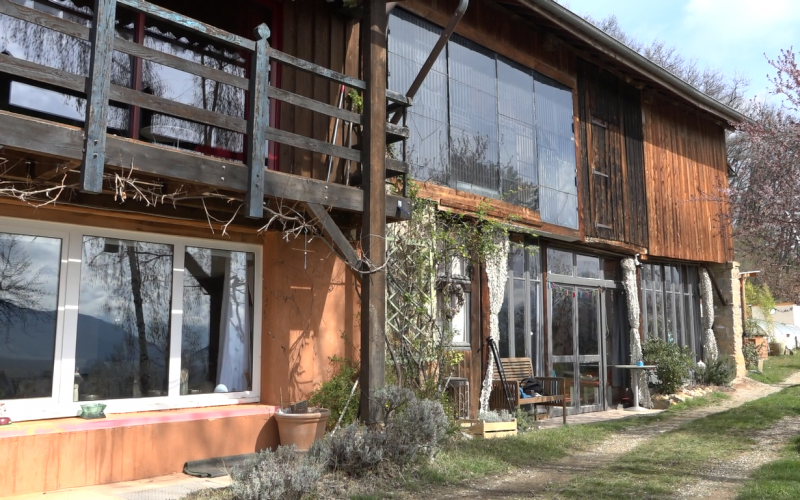
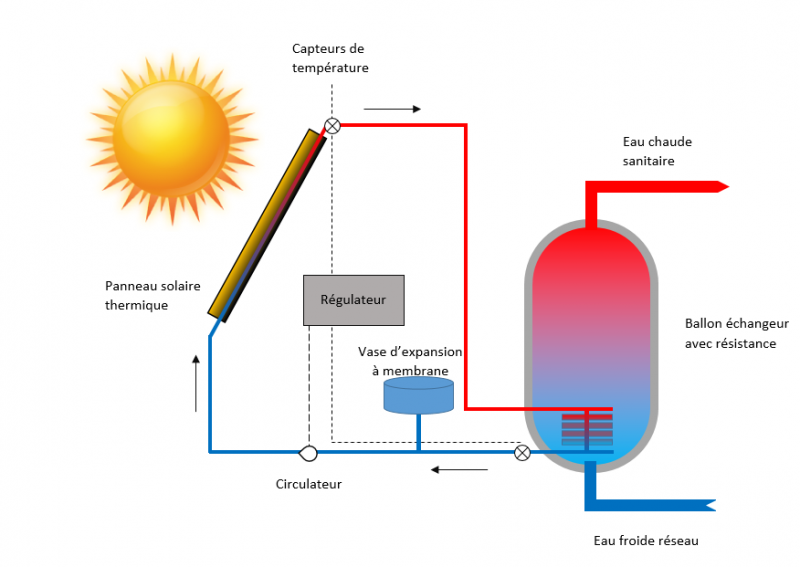
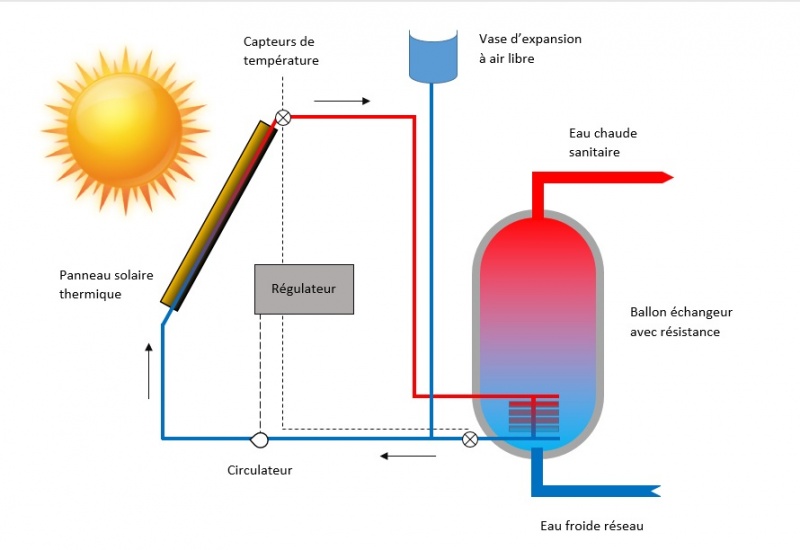
 Français
Français English
English Deutsch
Deutsch Español
Español Italiano
Italiano Português
Português